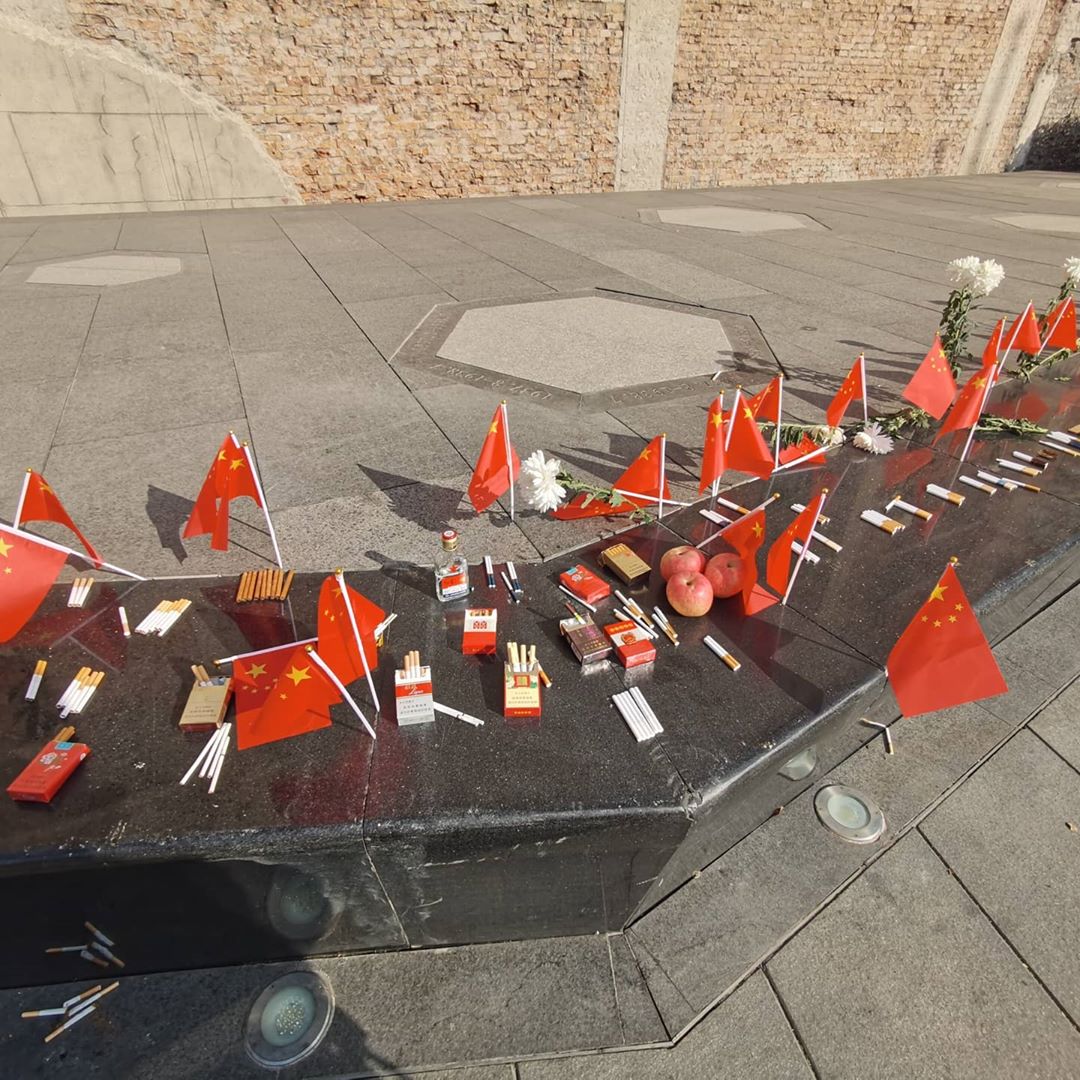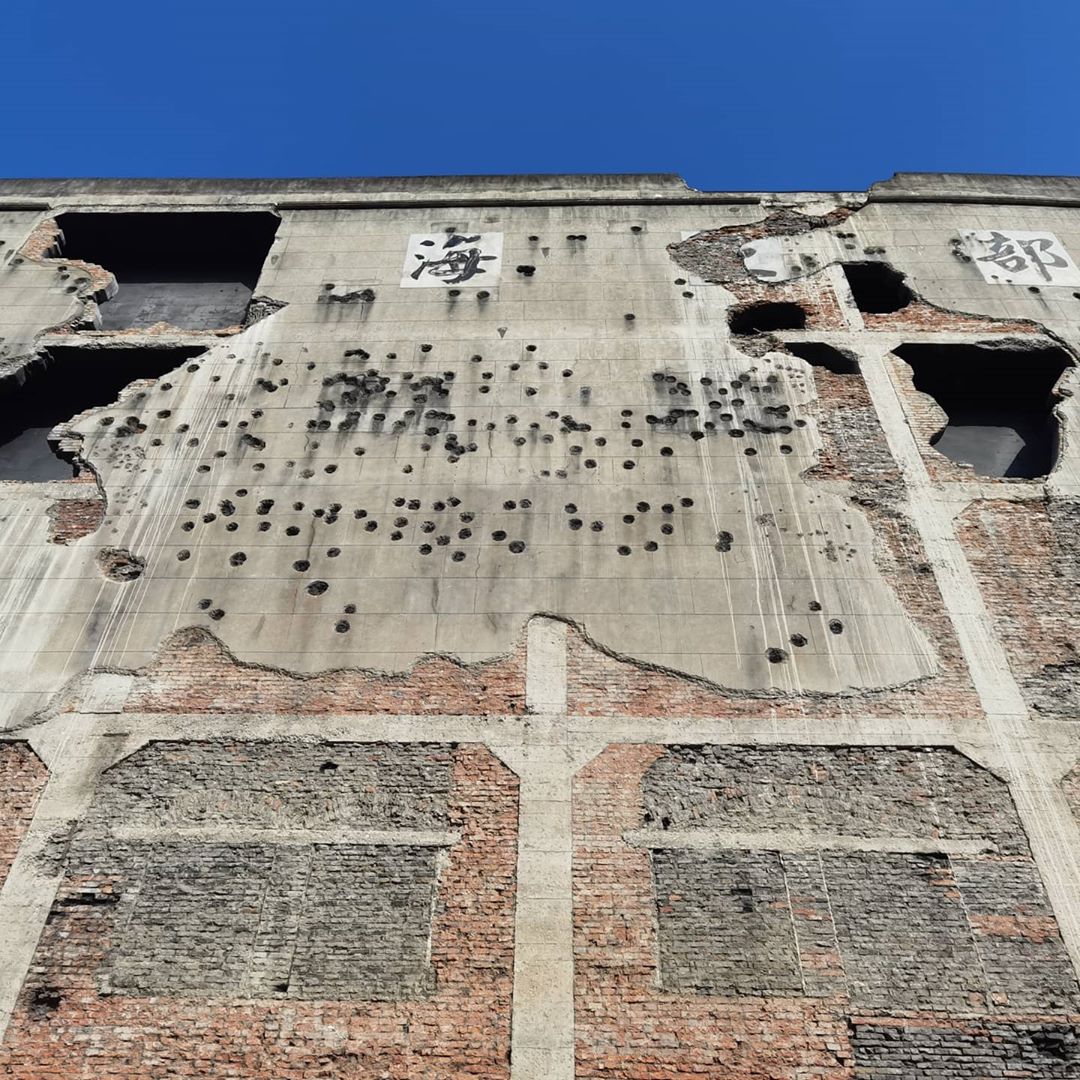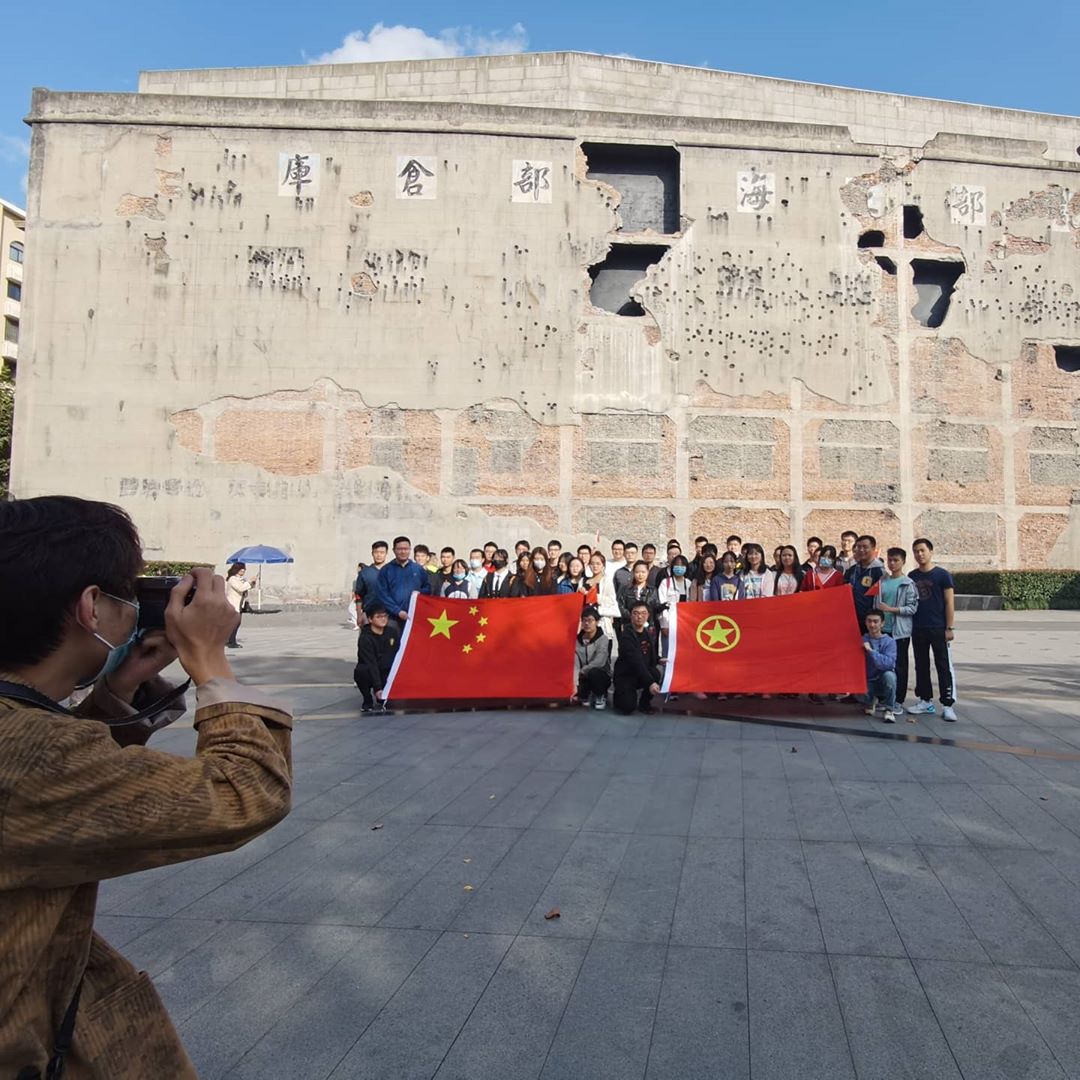
This is the Sihang Warehouse (四行仓库) at Shanghai’s Suzhou Creek. In 1937 during the Japanese invasion of Shanghai, it mainly stored bags of sand, corn, and beans, until the 452 men of the 88th division of the Chinese army retreated into it. The Japanese armies invaded further into the city and the 88th was ordered not to surrender the last bit of China-owned Shanghai-soil.
The battle took place in full views of the foreign powers on the other side of the shore, in their lofty international concession. The international section of Shanghai provided safety in the sense that the Japanese dared not to use bombs or mustard gas on the warehouse, in fear of accidentally hitting the concessions and triggering the French, British or American superpowers. But it also provided a way into foreign media: for four days the world looked on at the Japanese aggression on Chinese territory.
The 452 men held it out for four days. A 21-year old soldier strapped grenades around his waist and consequently jumped off the building to kill 20 Japanese soldiers and protect the west wall. A girl-scout brought a Chinese flag which was eventually raised on the roof to show everyone — foreigners, Japanese & Chinese alike — that China’s bravery would not falter. After four days — after the international media saw the attacks, the 88th retreated into the international concession.
This year the building became a hotspot thanks to the movie ‘The Eight Hundred’ (八百), inspiring nationalism across all ages. It’s hard to separate politics from any form of media in China, especially blockbusters. Soldiers in ‘The Eight Hundred’ talk about how they must inspire their country, that their country will be great in the future. There’s a museum inside, but the most telling part are the bullet and mortar holes on the west wall. People take photos of the warehouse and offer cigarettes, fruit and alcohol for the afterlife.



